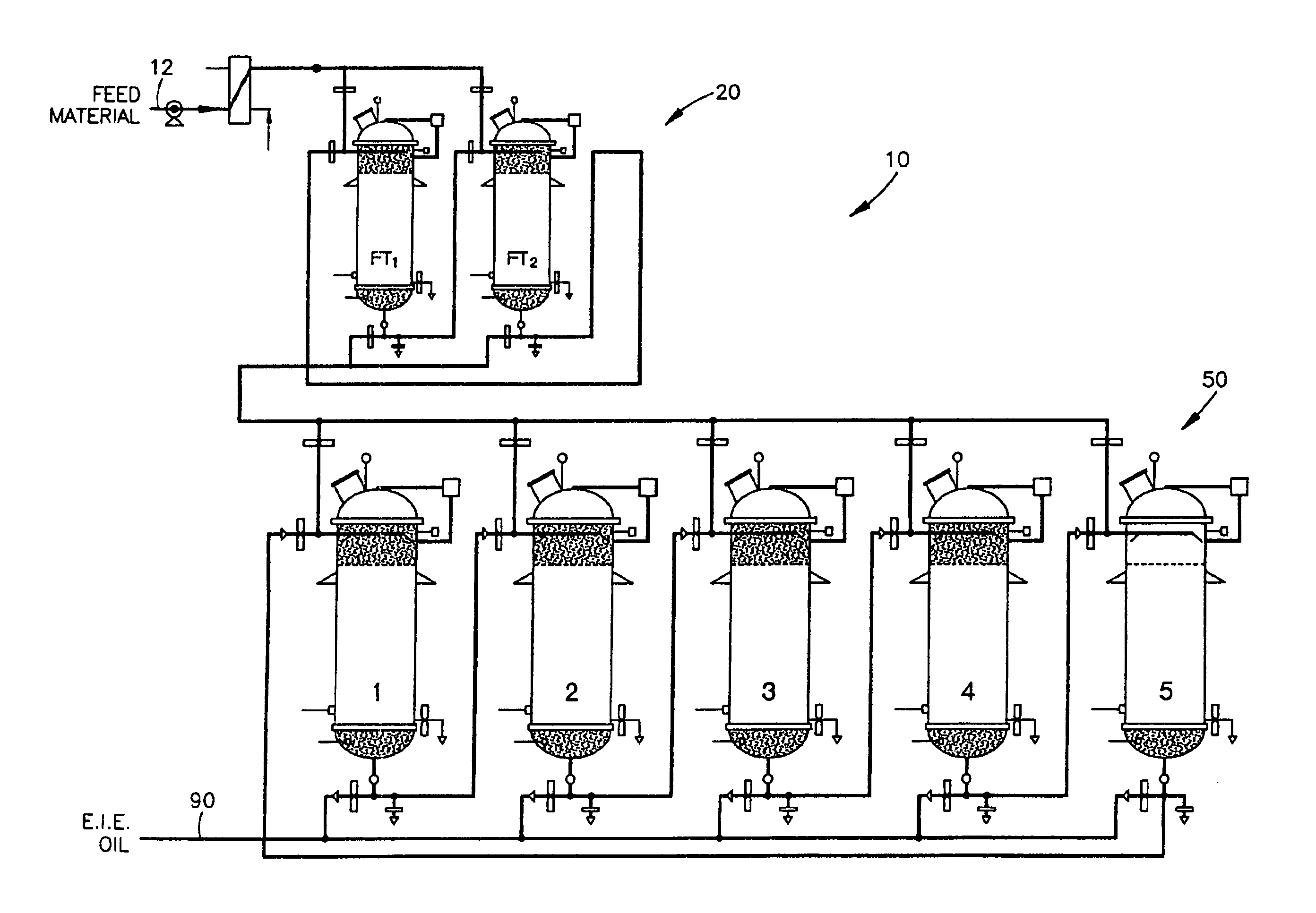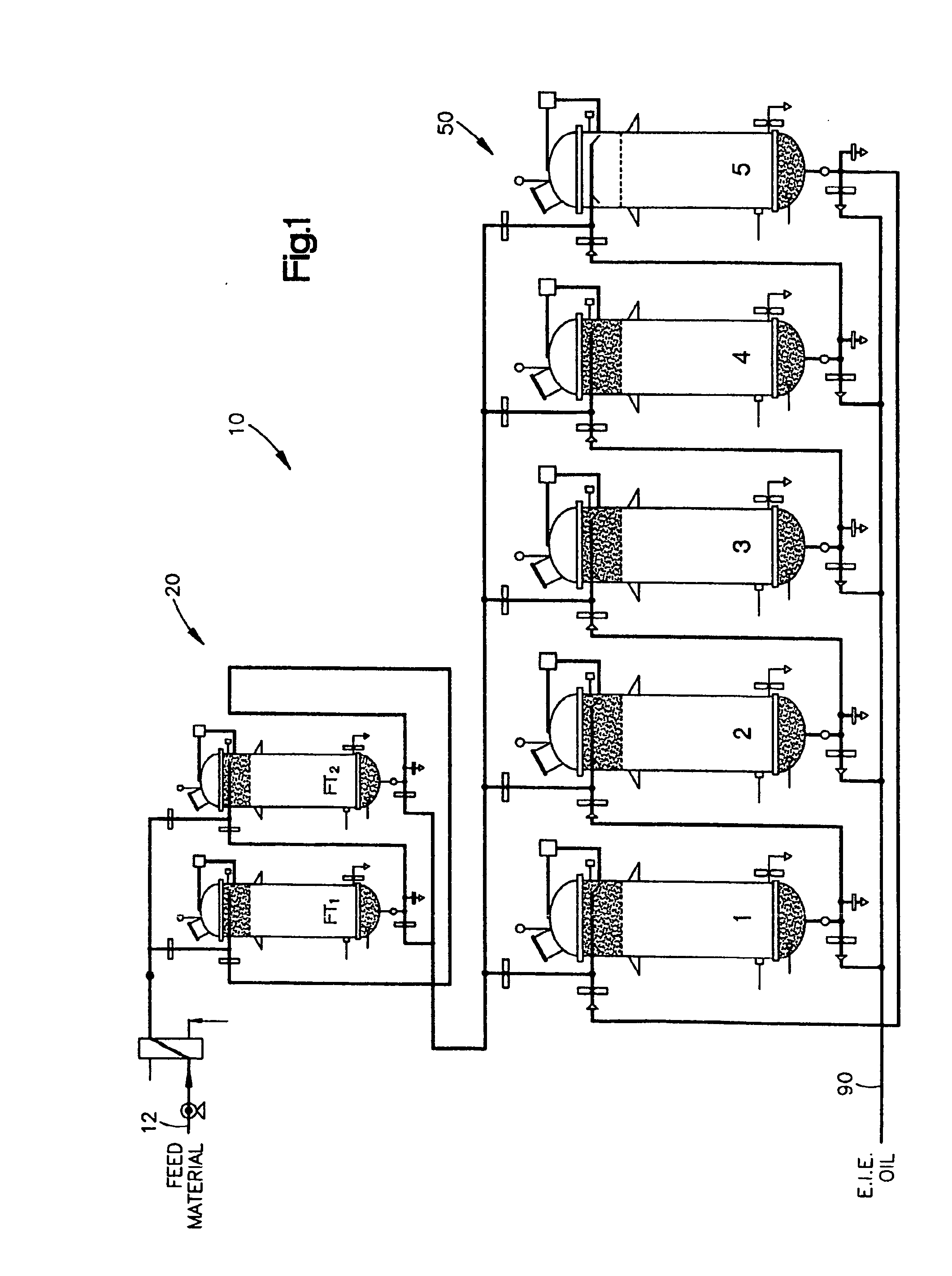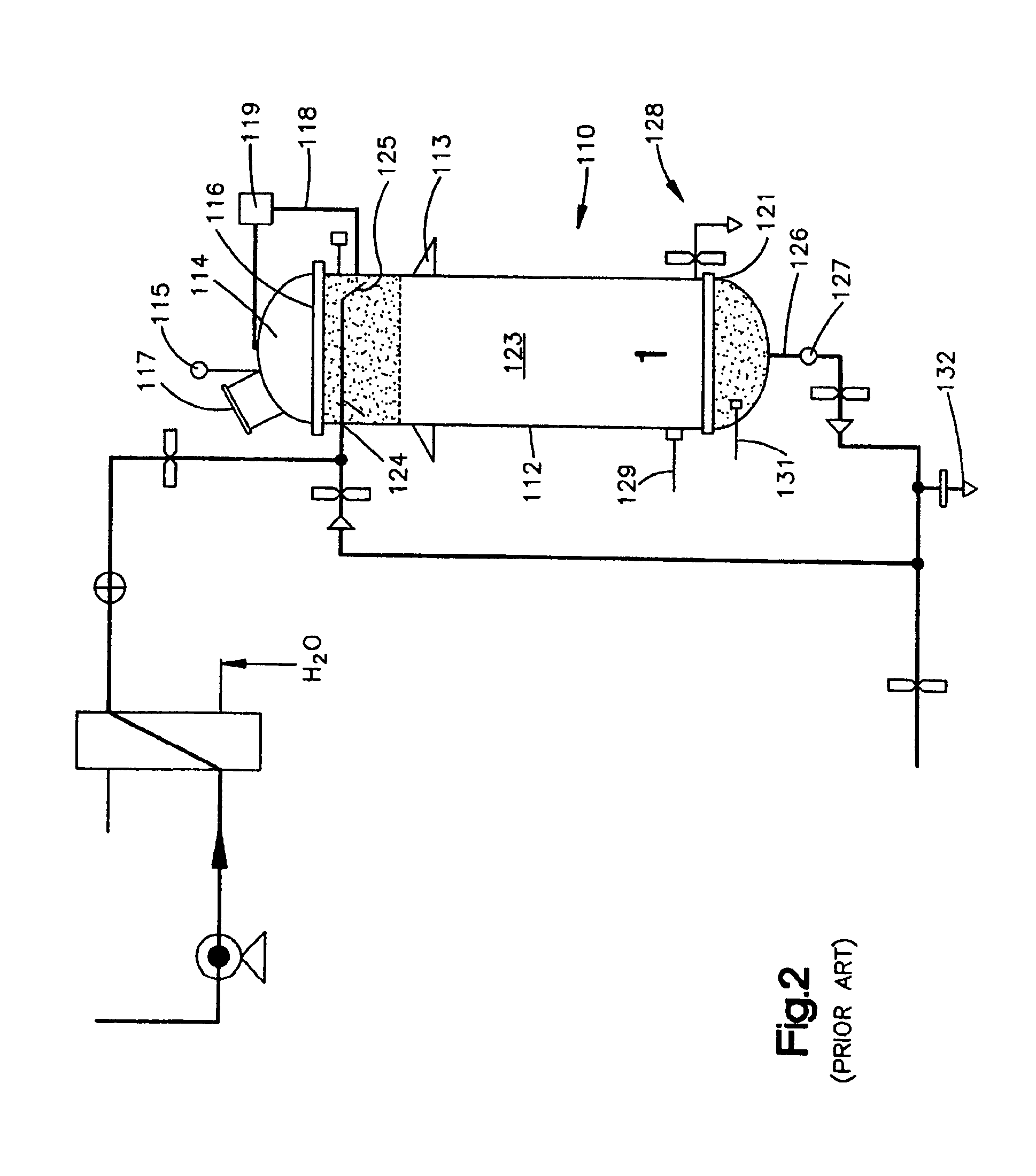Continuous Process and Apparatus for Enzymatic Treatment of Lipids
a technology of lipids and enzymology, which is applied in the direction of biomass after-treatment, enzyme production/based bioreactors, fatty-oil/fat refining, etc., can solve the problems of sodium methoxide catalysts being dangerous and difficult to handle, and not affording the manufacturer the degr
- Summary
- Abstract
- Description
- Claims
- Application Information
AI Technical Summary
Benefits of technology
Problems solved by technology
Method used
Image
Examples
example 1
Verification of Enzymatic Interesterification (Control)
[0079]The oil used in each of the following examples was a blend of fully hydrogenated refined and bleached oil produced from Palm Kernel (PK) and Palm Oils (PO) (60:40 blend), utilized as the hard stock for a “zero” trans type margarine product having “zero” trans-fatty acids, and brought to liquid temperature and bleached with 1% bleaching earth and 0.5% of TrySil® silica in accordance with known methods. The vacuum was broken with nitrogen and the resulting material was stored at less than 10° Celsius until used in the various examples herein.
[0080]In the initial verification of enzymatic interesterification, samples of the oil blend were interesterified without any pre-treatment utilizing both the traditional CIE (chemical interesterification) method with sodium methoxide catalyst and the EIE (enzyme interesterification) process using Novozymes Lipozyme® TL IM immobilized enzyme. In the CIE process, 400-500 g of the dried oi...
example 2
Evaluation of Citric Acid as Pre-Treatment Process Aid (Comparative Example)
[0083]It has been suggested that trace metals present in oil products can oxidize the oil and cause premature de-activation of the enzyme. Citric acid will act as a chelation agent for trace metals, resulting in their inactivation, as reported by Dutton et al. in the J.A.O.C.S. (1948 and 1949). Accordingly, citric acid was tested as a pre-treatment process aid to determine if it would result in prolonged enzymatic activity in a subsequent EIE process. Two trials of citric acid as a pre-treatment process aid were conducted. A laboratory scale enzyme interesterification treatment system as described in Example 1 was used, but using three columns connected in series. The second and third columns in the series were of Type “1” as illustrated in FIG. 5 and used in Example 1 above, but the first column was of Type “2” illustrated in FIG. 5. Each of the three columns was packed with roughly 7 grams of Novozymes Lip...
example 3
Evaluation of EDTA as Pre-Treatment Process Aid (Comparative Example)
[0090]As it was concluded that the two trials from Example 2 that citric acid exhibited a “poisoning” effect on the enzyme, it was thought that a different chelation agent might have a positive affect on the enzyme's activity by removing the trace metals present in the oils. EDTA (Disodium Ethylenediamine Tetraacetic Acid) is known as a chelation agent for the inactivation of trace metals.
[0091]Two trials of EDTA as a pre-treatment process aid were conducted. A type “2” column and two type “1” columns were arranged in series as described in Example 2 above. The three columns arranged contained a total of 21.3 g of the same enzyme as described above. For the first trial, 0.43 grams of micro-granular EDTA (obtained from Aksell Quimica (Indaiatuba, SP Brazil) product code 1282710200) was used as the process aid on top of the bed of enzymes in the first column, 1 cm height. A sample of the same oil blend as was used in...
PUM
| Property | Measurement | Unit |
|---|---|---|
| Weight | aaaaa | aaaaa |
| Weight | aaaaa | aaaaa |
| Fraction | aaaaa | aaaaa |
Abstract
Description
Claims
Application Information
 Login to View More
Login to View More - R&D
- Intellectual Property
- Life Sciences
- Materials
- Tech Scout
- Unparalleled Data Quality
- Higher Quality Content
- 60% Fewer Hallucinations
Browse by: Latest US Patents, China's latest patents, Technical Efficacy Thesaurus, Application Domain, Technology Topic, Popular Technical Reports.
© 2025 PatSnap. All rights reserved.Legal|Privacy policy|Modern Slavery Act Transparency Statement|Sitemap|About US| Contact US: help@patsnap.com



